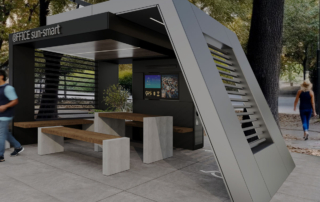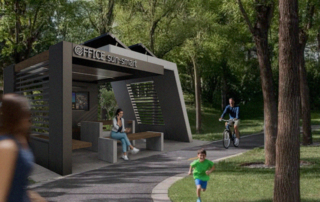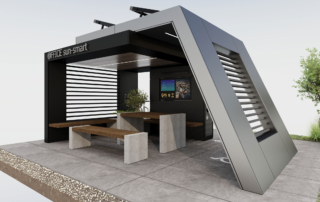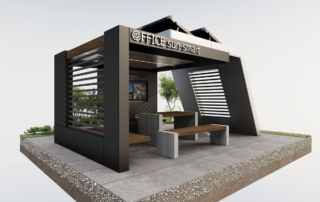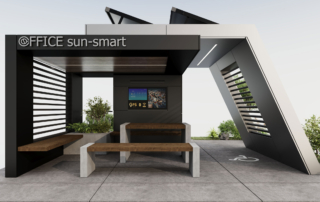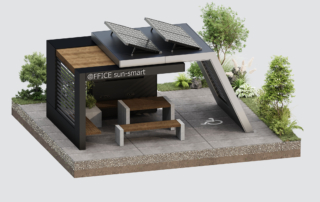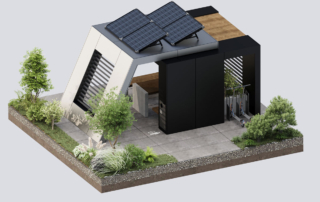Autobuska stanica predstavlja spoj mikroarhitekture, funkcionalnog dizajna i održive tehnologije, sa ciljem unapređenja kvaliteta javnog prostora i promocije energetske efikasnosti. Namenjena je za kratkotrajni boravak i informisanje korisnika u tranzitu, a istovremeno funkcioniše kao urbani reper i savremeni infrastrukturni element u sistemu javnog prevoza.
GENERAL INFORMATION ABOUT THE SUMMER HOMETHE SUMMER HOME
Construction and materialization: The supporting structure consists of a spatial skeleton of square and rectangular steel profiles, protected with anti-corrosion coatings, while the cladding surfaces are made of HPL (High Pressure Laminate) panels from the Kronospan collection. The panels are resistant to UV radiation, moisture and atmospheric influences, and are placed on an aluminum substructure. Decors in imitation of wood, concrete and neutral gray contribute to the visual integration of the building into various urban and suburban environments.
Energy system: The facility operates as an off-grid unit, relying solely on solar panels integrated into the roof structure. The system includes: MPPT charge controller, inverter and battery pack for energy storage. Electrical installations provide power for LED lighting, USB ports for charging mobile devices, LCD displays with timetable information, speakers and surveillance cameras.
Additional elements: Urbanistically integrated into the context of local transport infrastructure and green spaces, the station is designed for multiple users and equipped with benches made of waterproof plywood integrated into the steel structure. The possibility of installing information or promotional boards, as well as QR codes for access to timetables, WIFI network and other digital content, is also envisaged. The materials were chosen according to the criteria of durability, resistance to vandalism and minimal maintenance.
Purpose and concept: The bus station represents a combination of microarchitecture, functional design and sustainable technology, with the aim of improving the quality of public space and promoting energy efficiency. It is intended for short-term stays and information for transit users, while simultaneously functioning as an urban landmark and a modern infrastructure element in the system.


